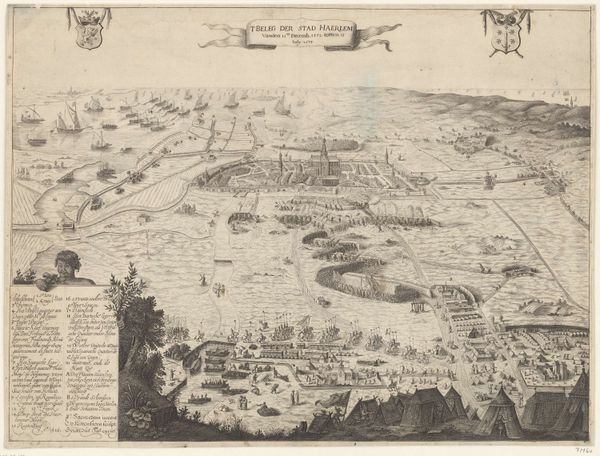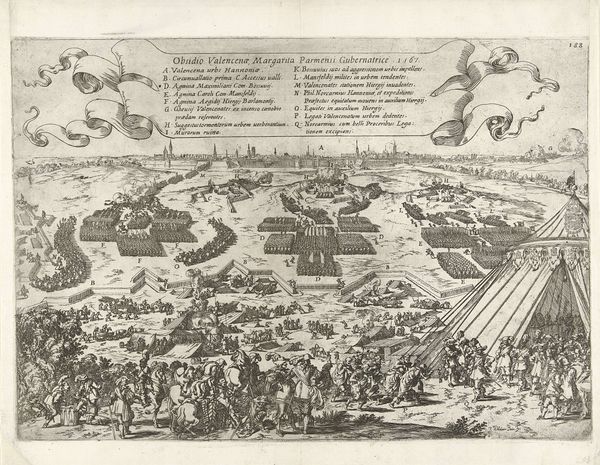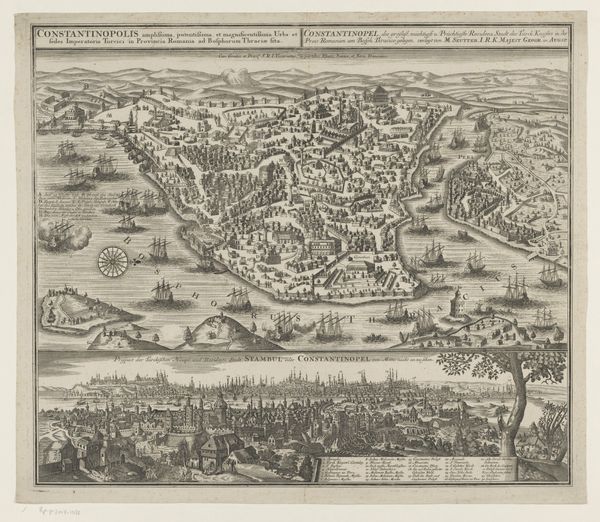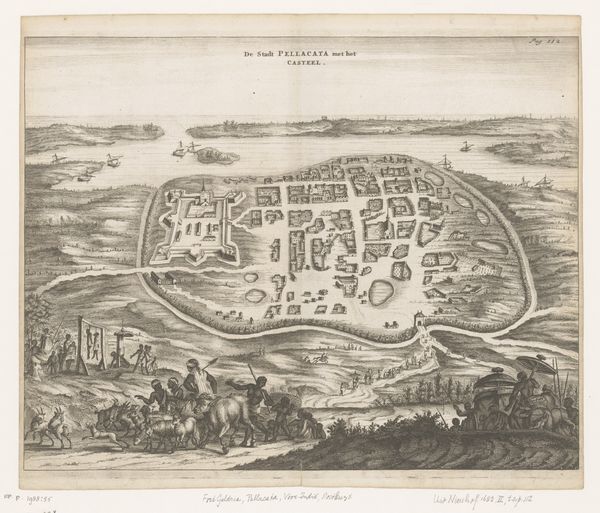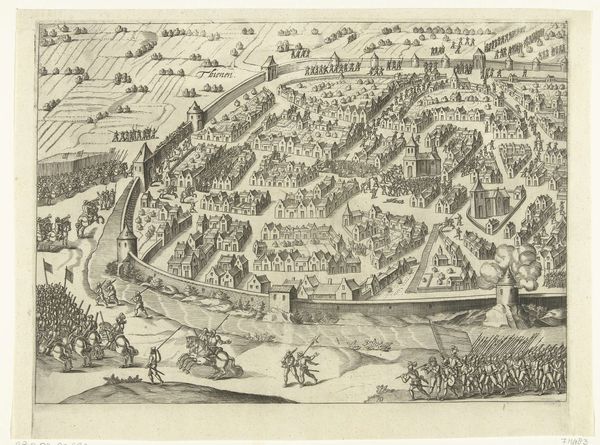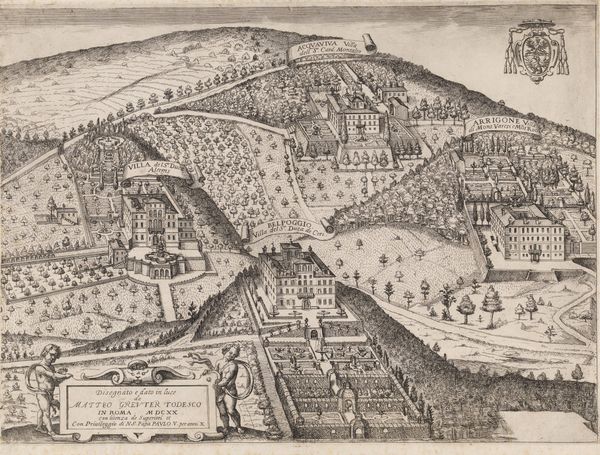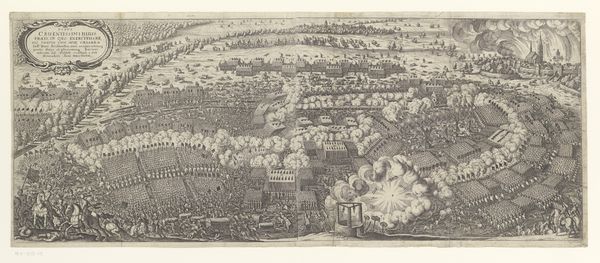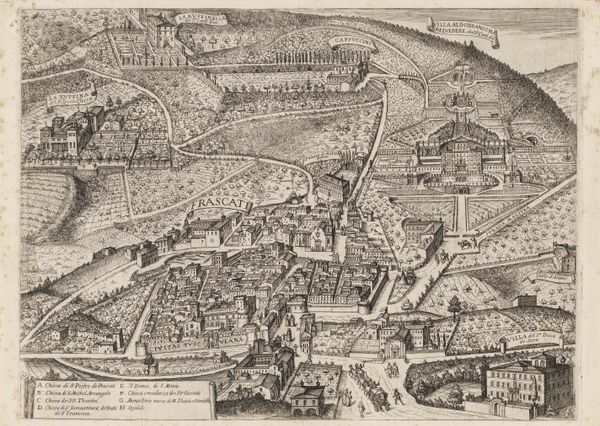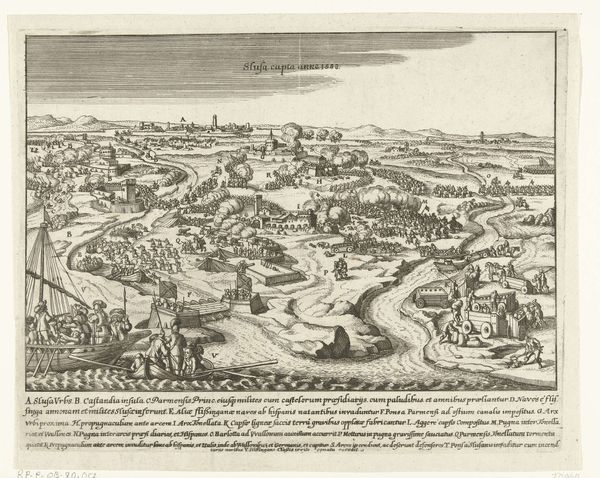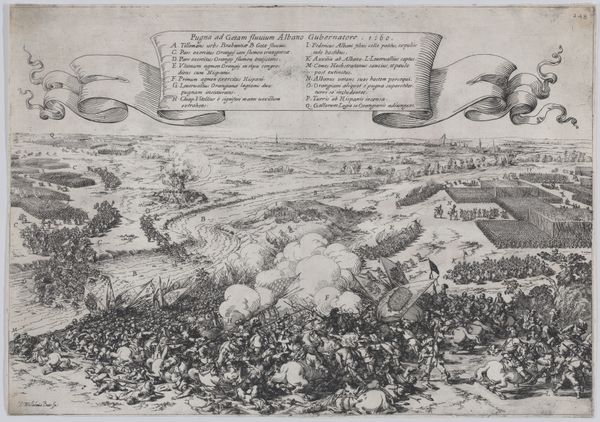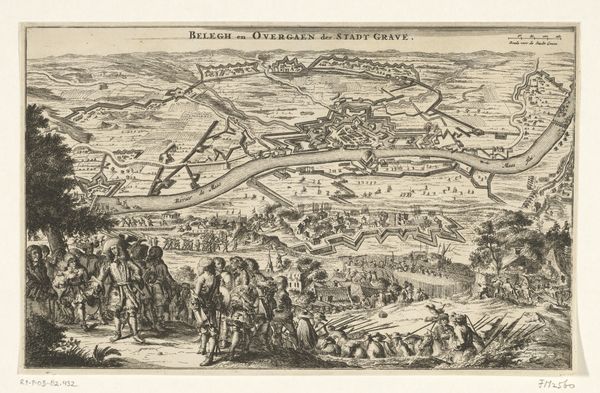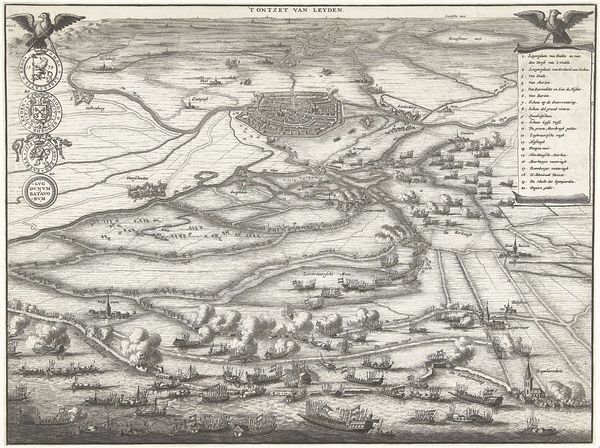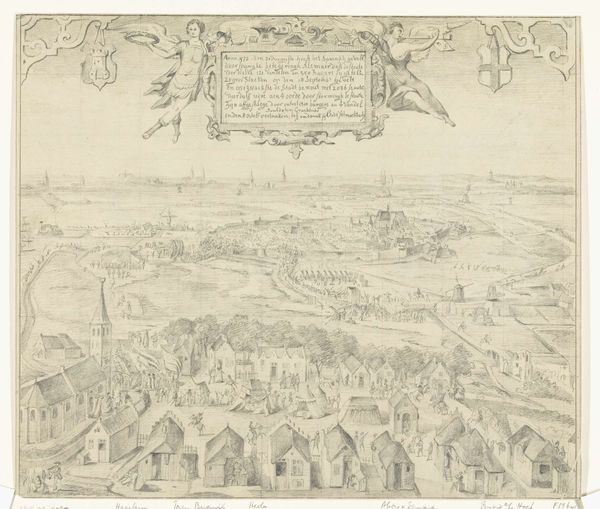
drawing, print, ink, pen, engraving
drawing
baroque
pen drawing
landscape
ink
pen
cityscape
engraving
Dimensions: height 281 mm, width 345 mm
Copyright: Rijks Museum: Open Domain
Curator: Welcome to the Rijksmuseum. We're standing before "The Siege of Haarlem, 1572-1573," an engraving rendered in pen, ink, and printmaking techniques by Coenraet Decker between 1673 and 1681. Editor: It’s surprisingly detailed. You immediately notice the intricate rendering of the siege and its surroundings, it all feels so meticulously mapped. A very imposing scene, both in its scale and narrative weight. Curator: Decker's choice of engraving allows for these very crisp, clean lines, a stark medium perhaps to portray a grim conflict. Consider the material realities here; each line etched represents labor, and the availability of prints would disseminate this perspective of the siege widely. Editor: Absolutely. The scene is dominated by the dynamics of power, reflecting the impact of military conflicts on ordinary people. The piece portrays the intersection between war, social life, and national identity. There are crowds everywhere, almost theatrical in their placement. Curator: True, there’s a theatricality in the ordering of space and its participants. You have the aerial view of the besieged city contrasted by the encampment in the foreground, reminding us about the economics involved in such operations. Notice the detail in the tents, the banners, and how everything points towards Haarlem. Editor: Exactly, and viewing this almost one hundred years after the actual siege begs the question: what ideological functions might it serve? It potentially becomes a means of both remembering and potentially reconstructing a narrative around Dutch resilience in the face of adversity. Curator: An interesting point. Looking at Decker's approach—the level of detail achievable through the engraving—perhaps he was thinking of its appeal to the expanding middle class, people consuming art to define themselves and understand their world. Editor: A tangible representation of state-sanctioned history but also about the relationship between rulers and the ruled. These cityscapes, in particular, offer invaluable insights into our collective and fractured past. Curator: Seeing Decker’s depiction through that lens transforms our understanding of this particular piece—and its endurance. Editor: Agreed. This detailed panorama acts as a conduit for exploring crucial historical events through the intersectional lens of material culture, power dynamics, and societal identity.
Comments
No comments
Be the first to comment and join the conversation on the ultimate creative platform.
